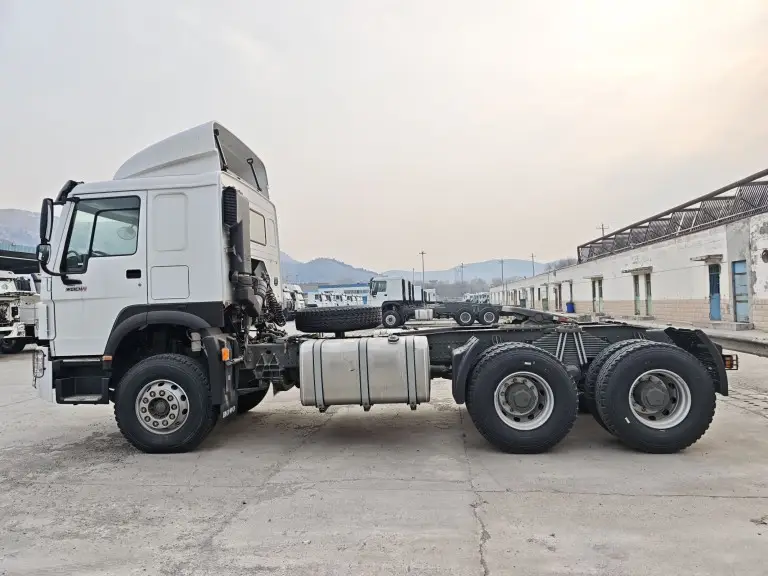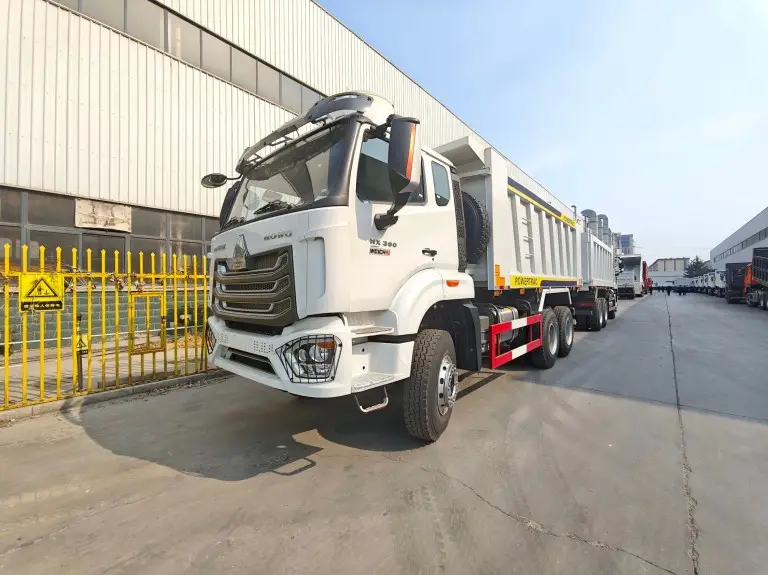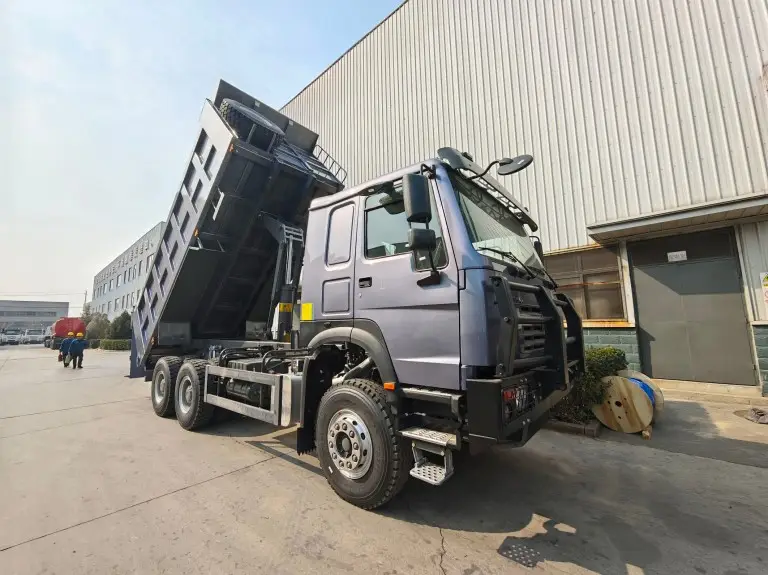China’s heavy-duty engine emission standards are based on the European system. They have evolved from the early China I to the current China VI. These standards strictly control pollutants like CO, HC, NOx, and PM. This article explains how these regulations affect HOWO truck engine design and examines the impact of compliance on performance and costs.
Table of Contents
Understanding HOWO Engines and Emission Standards
HOWO engines, developed by Sinotruk, are high-performance diesel systems. They are widely used in heavy-duty trucks for long-haul logistics and construction. Known for their reliability, strong power, and durability, they are popular with global fleet operators.
As emission regulations grow stricter worldwide, HOWO engines are constantly improved to meet environmental requirements. These standards limit harmful emissions like nitrogen oxides (NOx), particulate matter (PM), carbon monoxide (CO), and hydrocarbons (HC). This drives advancements in engine technology, such as better combustion efficiency, improved exhaust systems (e.g., SCR and DPF), and fuel innovations.
GENRON, a Chinese truck distributor, offers customized HOWO truck solutions to meet market-specific emission standards. For example, by adjusting engine settings and adding exhaust systems, HOWO trucks can comply with Euro VI or other regional regulations. This helps customers avoid compliance risks, reduce fuel consumption, and lower maintenance costs, improving overall efficiency.
For global fleet operators and buyers, understanding HOWO engine emission technologies and regulations is essential. It helps in planning compliance strategies and calculating total ownership costs (TCO). This proactive approach reduces risks and balances environmental and economic goals.

What Are the Emission Standards for HOWO Engines?
HOWO engines follow China’s latest China VI emission regulations. These rules set strict limits on pollutants from heavy-duty diesel vehicles. The goal is to reduce air pollution and protect public health.
Core Requirements of China VI Emission Standards
The China VI standard has two phases: VI-a and VI-b. VI-b was fully implemented in July 2023. The standard sets specific limits for key pollutants:
- Carbon Monoxide (CO): 1.5 g/kWh in WHSC tests, 4.0 g/kWh in WHTC tests.
- Hydrocarbons (HC): 0.13 g/kWh in WHSC tests, 0.16 g/kWh in WHTC tests.
- Nitrogen Oxides (NOx): 0.4 g/kWh in WHSC tests, 0.46 g/kWh in WHTC tests.
- Particulate Matter (PM): 0.01 g/kWh in both tests.
- Particle Number (PN): 8×10^11 #/kWh in WHSC tests, 6×10^11 #/kWh in WHTC tests.
Upgraded Testing Methods
China VI uses advanced testing protocols to ensure compliance:
- WHSC (World Harmonized Steady-State Cycle) and WHTC (World Harmonized Transient Cycle): These tests simulate real-world vehicle operations more accurately.
- WNTE (World Harmonized Not-To-Exceed): Ensures emissions stay within limits under all conditions.
- PEMS (Portable Emission Measurement System): Verifies compliance through real-world driving tests, going beyond lab testing.
- In the VI-b phase, PEMS requirements and PN limits are stricter. This ensures better environmental performance during actual use.
Exhaust After-Treatment Technologies
HOWO engines use advanced exhaust systems to meet China VI standards:
- DOC (Diesel Oxidation Catalyst): Converts CO and HC into carbon dioxide and water, with up to 90% efficiency.
- DPF (Diesel Particulate Filter): Captures over 95% of particulate matter and regenerates periodically to remove carbon buildup.
- SCR (Selective Catalytic Reduction): Uses urea (DEF) to convert NOx into nitrogen and water.
- ASC (Ammonia Slip Catalyst): Controls ammonia emissions, keeping levels below 10 ppm.
While PEMS and exhaust systems increase initial costs by 5-10%, they lower long-term maintenance expenses and improve fuel efficiency. This reduces total ownership costs (TCO). These technologies also perform well in export inspections, helping HOWO trucks enter global markets smoothly.
Conclusion
HOWO engine emission standards balance environmental protection and performance. They achieve this through strict pollutant control, advanced testing, and efficient exhaust systems. This allows HOWO trucks to meet tough global regulations while staying competitive internationally.
GENRON is committed to providing high-quality services. We understand that every customer has unique needs. Whether you need HOWO trucks that meet local regulations or solutions optimized for global operations, we can help. From engine selection to emission optimization and vehicle customization, GENRON ensures every HOWO truck fits your business needs.
If you’re looking for reliable HOWO truck solutions, contact us today. GENRON offers expert advice and tailored services to help your business succeed globally. Start your customization journey with us now!
FAQ
What emission standards do our HOWO engines comply with?
HOWO engines meet the China VI-b standard, equivalent to Euro VI. These rules control emissions from heavy-duty diesel engines, ensuring they are eco-friendly. In urban settings, these engines perform exceptionally well.
How do PEMS testing requirements affect our engines?
PEMS (Portable Emission Measurement System) is key to emission regulations for heavy-duty equipment. We ensure our engines pass PEMS road tests to confirm real-world compliance. This helps identify issues early and improves reliability.
What measures are taken to prevent excessive NOx emissions?
We use advanced exhaust systems like SCR (Selective Catalytic Reduction) to control NOx emissions. Our engines are also finely tuned to meet standards.
Are our gas engines subject to the same emission standards?
Gas engines have different emission characteristics but must still follow regulations. We ensure they meet specific regional and application standards, often similar to diesel rules.
What are the differences between China VI-a and China VI-b emission standards?
China VI-a and VI-b are progressive regulations. VI-b is stricter. We have upgraded our engines to VI-b, offering better emission control and environmental benefits, including tougher PEMS protocols.





